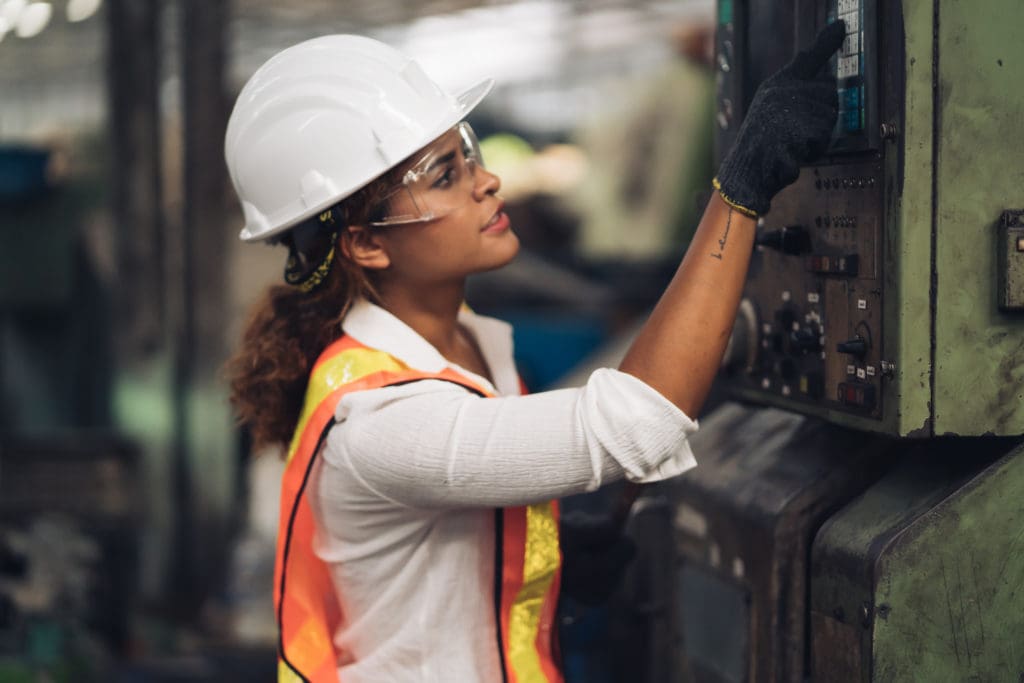
Only about one in nine construction workers are women.
78% of women in construction surveyed claim they love their jobs, but that doesn’t mean they have it easy. Construction is a tough job. You have to deal with long hours, temperamental weather, endless mounds of dirt and debris, and hazardous conditions. Imagine having to deal with all that and gender discrimination.
As more construction companies strive to achieve gender equity, it’s important to listen to and recognize the challenges women in construction face:
Respect
80% of women surveyed about their construction jobs feel respected by their coworkers. However, nearly a third of women don’t believe their managers, supervisors, and other industry leaders listen to men and women equally.
Women often feel their opinion doesn’t carry the same weight as their male coworkers. In other instances, their voices go unheard until their other coworkers make the same suggestion. It’s no wonder why some women in construction feel invisible sometimes.
Many women feel they have to constantly prove their technical knowledge and worth, even if they’re proven themselves time and time again.
Underrepresentation
Women only make up 11% of all construction workers, and although they can perform any role in the industry, they seldom do. Women only make up:
- 14% of staff executive positions
- 7% of line executive positions
- 2.5% of the total number of tradespeople
Poor Communication
Poor communication can grind productivity to a halt.
In the same survey above, women in construction reported that communication in the industry is lacking. Sometimes the communication issues are between general contractors and subcontractors, and sometimes it’s between men and women in general.
While gendered communication isn’t an exact science, men and women frequently have different communication styles. According to Point Park University, men tend to have a “report” style, which is rooted in facts, data, and potential solutions to problems. Women tend to focus more on “rapport,” which builds relationships by sharing anecdotes and personal information. They also focus more on inclusion.
Another study reveals that when men and women receive the same training, these communication discrepancies are less common. That said, it can be inferred that DEI training can weaken the communication barrier between the sexes.
Uncertainty
Construction companies can fail regardless of the economy. Many problems that women in construction face are also problems for men. When it comes to project timelines and spec changes, industry uncertainty is gender neutral.
Inconsistencies can lead to elevated levels of stress and anxiety. However, because many women already feel invisible or disrespected, the negative impact of these emotions can be much worse.
Hostile Work Environment
Women are subject to sexual and physical harassment, sexist remarks, and belittling comments.
In multiple focus groups, female construction workers reported they frequently felt more isolated because they were the only woman or one of two women on a job site. This can also lead to increased stress or anxiety, or make them feel unsafe. The environment can also be distracting and cause women to overlook proper safety precautions, putting them at increased risk of injuries.
Shared Bathrooms
Because there are often so few women on a job site, construction projects rarely offer gender-specific toilets. Instead, women have to share port-a-potties with men. Port-a-potties are hardly known for being clean, and sharing one with multiple male coworkers can be an unpleasant experience.
To be fair, there are plenty of men who don’t like port-a-potties, either.
Safety Equipment
Safety apparel and equipment often needs to be form-fitted to be safe. Oversized hard hats or ill-fitting gloves won’t properly protect you on a work site. These equipment types put women at a disadvantage, since many women have smaller frames than men.
Luckily, as more women enter the construction industry, more companies are designing apparel and equipment with them in mind. The days of women trying to find male apparel in a comparable size are dwindling.
Women in Construction are Incredibly Valuable
Construction workers of all types are in high demand. To maintain growth, construction companies must hire roughly 740,000 workers each year from 2022-2024. Companies are taking great strides to diversify their workforce to meet these demands.
Not only is adding more women to the ranks a financial imperative, it’s also a cultural one. There’s a strong business case for diversity in construction, and the companies that focus on making their work environments more equitable and respectful are the ones most likely to achieve success.
